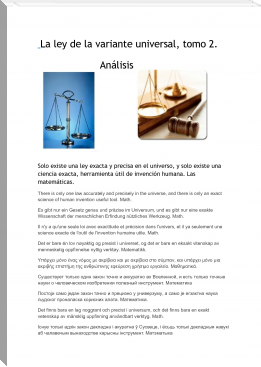Indian Army weapons by Demonsofdoubt (good non fiction books to read txt) 📕

Light machine gun,.Small taste of the Indian army.
Calibers.
Power
Might
Conflict
Air force
Navy
Special forces
Read free book «Indian Army weapons by Demonsofdoubt (good non fiction books to read txt) 📕» - read online or download for free at americanlibrarybooks.com
- Author: Demonsofdoubt
Read book online «Indian Army weapons by Demonsofdoubt (good non fiction books to read txt) 📕». Author - Demonsofdoubt
Akash has an advanced automated functioning capability. The 3D CAR automatically starts tracking targets at a distance of around 150 km providing early warning to the system and operators. The target track information is transferred to GCC. GCC automatically classifies the target. BSR starts tracking targets around a range of 100 km. This data is transferred to GCC. The GCC performs multi-radar tracking and carries out track correlation and data fusion. Target position information is sent to the BLR which uses this information to acquire the targets.
The BCC which can engage a target(s) from the selected list at the earliest point of time is assigned the target in real time by the GCC. The availability of missiles and the health of the missiles are also taken into consideration during this process. Fresh targets are assigned as and when intercepts with assigned targets are completed. A single shot kill probability of 88% has been achieved by the system taking into consideration various parameters of the sensors, guidance command, missile capabilities and kill zone computations.
There are a number of possibilities for deploying Akash weapon system in autonomous mode and in group mode for neutralizing the threat profiles with defined multi-target engagement scenarios. In the Group mode we can have number of configurations to defend vulnerable areas depending upon nature and expected threat pattern, characteristics of threat. Similarly, multiple batteries in autonomous mode can be deployed to defend vulnerable areas/points. In a Group formation, the four Batteries can be deployed in various geometric formations, as suited to the vulnerable area being protected and the extent desired to be sanitized from enemy air threat. In a box deployment pattern, an Akash group can defend an area of 62 km x 62 km. In a linear array configuration, it covers an area of 98 km x 44 km. Trapezoidal configuration gives defense to the largest area as compared to any other pattern of deployment covering an area of size 5000 square km.[18]
Each Akash battery can engage up to four targets simultaneously. Each battery has four launchers with three missiles each, with each Rajendra able to guide eight missiles in total, with a maximum of two missiles per target. Up to a maximum of four targets can be engaged simultaneously by a typical battery with a single Rajendra if one (or two) missile is allotted per target. A single Akash missile has an 88% Probability of kill. Two missiles can be fired, five seconds apart, to raise the Probability of Kill to 98.5%.
Communications between the various vehicles are a combination of wireless and wired links. The entire system is designed to be set up quickly and to be highly mobile for high survivability.
The Akash system can be deployed by rail, road or air.
Aircraft
The Sukhoi Su-30MKI[3] (NATO reporting name: Flanker-H) is an air superiority fighter jointly developed by Russia's Sukhoi and India's Hindustan Aeronautics Limited (HAL) for the Indian Air Force (IAF). A variant of the Sukhoi Su-30, it is a heavy, all-weather, long-range fighter.
Development of the variant started after India signed a deal with Russia in 2000 to manufacture 140 Su-30 fighter jets.[4] The first Russian-made Su-30MKI variant was accepted into the Indian Air Force in 2002,[5] while the first indigenously assembled Su-30MKI entered service with the IAF in 2004.[6] In 2007, the IAF ordered 40 additional MKIs.[7] The IAF has 157 Su-30MKIs in active service as of January 2012;[1] it plans to have a fleet of 272.[8] The Su-30MKI is expected to form the backbone of the Indian Air Force's fighter fleet to 2020 and beyond.
The aircraft is tailor-made for Indian specifications and integrates Indian systems and avionics as well as French and Israeli subsystems.[10] It has abilities similar to the Sukhoi Su-35 with which it shares many features and components.The Su-30MKI is a highly integrated twin-finned aircraft. The airframe is constructed of titanium and high-strength aluminium alloys. The engine nacelles are fitted with trouser fairings to provide a continuous streamlined profile between the nacelles and the tail beams. The fins and horizontal tail consoles are attached to tail beams. The central beam section between the engine nacelles consists of the equipment compartment, fuel tank and the brake parachute container. The fuselage head is of semi-monocoque construction and includes the cockpit, radar compartments and the avionics bay.The aircraft has a fly by wire (FBW) with quadruple redundancy. Depending on the flight conditions, signals from the control stick position transmitter or the FCS will be coupled to the remote control amplifiers. These signals are combined with feedback signals fed by acceleration sensors and rate gyros. The resultant control signals are coupled to the high-speed electro-hydraulic actuators of the elevators, rudders and the canard. The output signals are compared and, if the difference is significant, the faulty channel is disconnected. FBW is based on a stall warning and barrier mechanism which prevents development of aircraft stalls through a dramatic increase in the control stick pressure. This allows a pilot to effectively control the aircraft without running the risk of reaching the limit values of angle of attack and acceleration. Although the maximum angle of attack is limited by the canards the FBW acts as an additional safety mechanism.
Phase 3 of further development of the MKI, will integrate avionic systems being developed for the Indo-Russian Fifth Generation Fighter Aircraft program.
The HAL Tejas (Hindi pronunciation: [t̪eːdʒəs]) is a lightweight multirole fighter developed by India. It is a tailless,[N 1] compound delta-wing design powered by a single engine. It came from the Light Combat Aircraft (LCA) programme, which began in the 1980s to replace India's aging MiG-21 fighters. Later, the LCA was officially named "Tejas",[4][N 2] meaning "Radiance" by then Prime Minister Atal Bihari Vajpayee.[5]
The Tejas has the delta wing configuration, with no tailplanes or foreplanes, and features a single vertical fin. It integrates technologies such as relaxed static stability, fly-by-wire flight control system, advanced digital cockpit, multi-mode radar, integrated digital avionics system, advanced composite material structures and a flat rated engine. The IAF is reported to have a requirement for 200 single-seat and 20 two-seat conversion trainers, while the Indian Navy may order up to 40 single-seaters to replace its Sea Harrier FRS.51 and Harrier T.60.[6]
The Tejas achieved a speed of over 1,350 kilometres per hour (840 mph) during its sea level flight trials, thus becoming the second supersonic fighter developed indigenously by Hindustan Aeronautics Limited after the HAL Marut.[7] The Tejas was cleared in January 2011 for use by Indian Air Force pilots. It is to reach final operational clearance in 2010.
The Aérospatiale SA 315B Lama is a French single-engined helicopter developed to meet hot and high operational requirements of the Indian Armed Forces. It combines the lighter Alouette II airframe with Alouette III components and powerplant. The helicopter was licence built by Hindustan Aeronautics Limited (HAL) in India as the Cheetah.
An upgraded variant using the Turbomeca TM 333-2M2 engine is known as the HAL Cheetal.Originally designed to meet an Indian armed forces requirement for operation in hot and high conditions, the Lama combines the Artouste powerplant and rotor system of the Alouette III with a reinforced Alouette II airframe. First flown on 17 March 1969, the SA 315B received its French airworthiness certificate in 1970 and was introduced as the Lama in July 1971.
As with the Alouette series, the Lama can be fitted for various roles, such as light passenger transport or agricultural tasks. The military variants include liaison, observation, photography, air/sea rescue, transport and ambulance duties. The SA315B is particularly suited to mountainous areas due to its performance and can carry underslung loads of up to 1000 kg (2,205 lb).
In 2006-7, HAL proposed a variant known as the HAL Cheetal with an updated Turbomeca TM 333-2M2 engine for Indian Army operations.
The HAL Light Combat Helicopter (LCH) is a multirole combat helicopter being developed in India by Hindustan Aeronautics Limited (HAL) for use by the Indian Air Force and the Indian Army.The failure of the Russian built Mi-35 to perform satisfactorily in the high altitude battle zones of Kargil highlighted the requirement of an attack helicopter specially made for such operations.[citation needed] In 2006, HAL announced its plans to indigenously design and build the LCH; funds for designing and developing the LCH to meet the requirements of the Indian Army and the Indian Air Force were sanctioned in October 2006. The helicopter has a maximum weight of 5.5 tonnes, and has a service ceiling of 6,500 meters.[1]
The LCH is a derivative of the HAL Dhruv, which was inducted into the Indian armed forces. Basing on an existing helicopter is expected to greatly reduce LCH project costs, which is pegged at INR3.76 billion (US$71.1 million).[2] The Indian Air Force is to acquire 65 LCHs and Indian Army is to acquire 114 LCHs.[3]
The LCH was expected to be ready for the Initial Operational Clearance (IOC) by December 2010 with the Final Operational Clearance (FOC) in 2011. However, the revised timeframes for LCH should be ready for induction into IAF by 2012-2013.The first prototype of LCH completed its first ground run on 4 February 2010.[5] HAL has a firm order to deliver 65 LCH to the IAF and 114 to the Army.[6] HAL has performed the maiden flight of its LCH on 29 March 2010. The first LCH Technology Demonstrator (TD-1) flew a 20 minute flight from HAL's Helicopter Complex, Bangalore. It carried out low speed, low altitude checks on the systems on board. The crew reported that the performance of the helicopter and systems were satisfactory.[7][8]
The third test flight of the LCH was successfully made on 23 May 2010; it fulfilled the desired parameters and allowed for further armed tests to proceed. The second prototype, which has been weaponized, was unveiled at Aero India 2011 in February 2011. The second LCH prototype (TD-2) featured substantial weight reductions over the earlier TD-1. Ashok Nayak, chairman of HAL, stated that the project has exceeded human and payload requirements mandated by IAF for the development.[9][10] Light Combat Helicopter TD-2 achieved its first flight on 28 June 2011.[11] Two more prototypes are under construction to speed up its induction into the Indian Air Force in 2012.[citation needed]
On 1 July 2012, the LCH begin a series of trials near Chennai; amongst other elements, the LCH's air speed measurement system will be trialled and various component stresses gauged measured.[12] The third prototype of the LCH is about to be delivered and is expected to be different from the LCH-1 and LCH-2. The third prototype is said to be significantly lighter than its predecessors.[12]
The LCH second prototype, TD-2 completed sea level trials conducted in late June to early July 2012. The trials covered helicopter performance, loads measurement,





Comments (0)